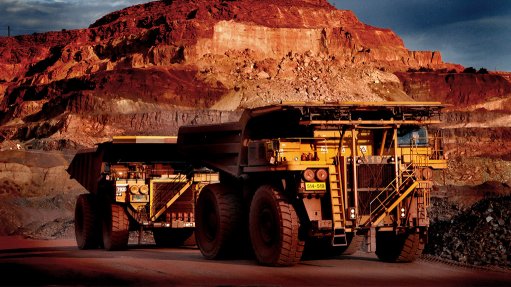
Iron-ore producer Kumba Iron Ore has marked a significant milestone in its safety performance by achieving more than six years of fatality-free production. The company said on February 2 that the safety record was the result of maintaining a focus on improving safety measures and promoting a culture of safe work practices across its operations.
“Kumba is producing safely and responsibly as we mark more than six years of fatality-free production. Sishen delivered a solid performance, demonstrating ongoing operational stability, while Kolomela’s performance is improving, ensuring that both of our operations are well set up for 2023,” Kumba CEO Mpumi Zikalala said.
During 2022, Kumba implemented a safety reset initiative across all of its sites to improve safety leadership and ensure the work is well planned, designed and executed to ensure a safer working environment.
Kumba's production for the fourth quarter of the year increased by 3% year-on-year to ten-million tonnes.
Full-year production, however, decreased by 8% to 37.7-million tonnes, compared with the 40.9-million tonnes produced in 2021, owing to operational challenges at Kolomela and constraints in the rail sector, including industrial action at State-owned rail and ports operator Transnet's operations.
These difficulties resulted in high levels of finished product stockpiles at the mines, which have reached capacity, Kumba said.
At the end of December, finished stock levels had increased to 7.8-million tonnes from 6.1-million tonnes a year before, with the majority of the stock located at the mines.
“Transnet’s logistics remain a concern, with poor performance continuing subsequent to the two-week wage strike in October and the annual maintenance shutdown in November,” Zikalala pointed out.
Meanwhile, Kumba's iron-ore sales for the fourth quarter decreased by 35% to 6.9-million tonnes, while full-year sales were 9% lower year-on-year at 36.6-million tonnes. This decline was a result of sub-optimal logistics performance and low levels of finished stock at Saldanha port in the Western Cape.
“Sales decreased . . . largely due to Transnet's performance,” Zikalala said.
Owing to the integrated nature of the mining industry as part of the logistics system, the Transnet board and Minerals Council South Africa office bearers announced on December 19 that they have agreed to establish joint collaborative structures and work together to ensure that all possible actions are taken to stabilise, recover and improve the throughput of South Africa’s rail and ports systems to unlock growth and improve the movement of commodities in the national interest.
Kumba is part of this collaboration with a focus on the improvement of the performance of the Iron-ore Export Channel.
Meanwhile, load curtailment by State-owned power utility Eskom has increased, and while Kumba has minimised the impact on production by rescheduling work according to load curtailment requirements, managing operations around the availability of power supply represents an increasing risk, the company said.
LOWER EARNINGS
Kumba has warned shareholders that it expects to report a 38% to 44% year-on-year decrease in headline earnings to between R18.71-billion and R20.3-billion for the 12 months ended December 31. Headline earnings a share are estimated to be between R58.29 and R64.49.
The decrease in earnings for the period is largely attributable to a lower average realised free-on-board export ore price and lower sales volumes, partly offset by a weaker rand:dollar exchange rate.
Further, basic earnings are expected to be between 51% and 56% lower year-on-year at between R14.7-million and R16.27-million, while earnings a share are expected to be between R45.82 and R50.69. Basic earnings reflect an impairment on the asset value of the Kolomela mine as a result of revisions to the forecast production and cost profile in the latest life-of-asset plan.